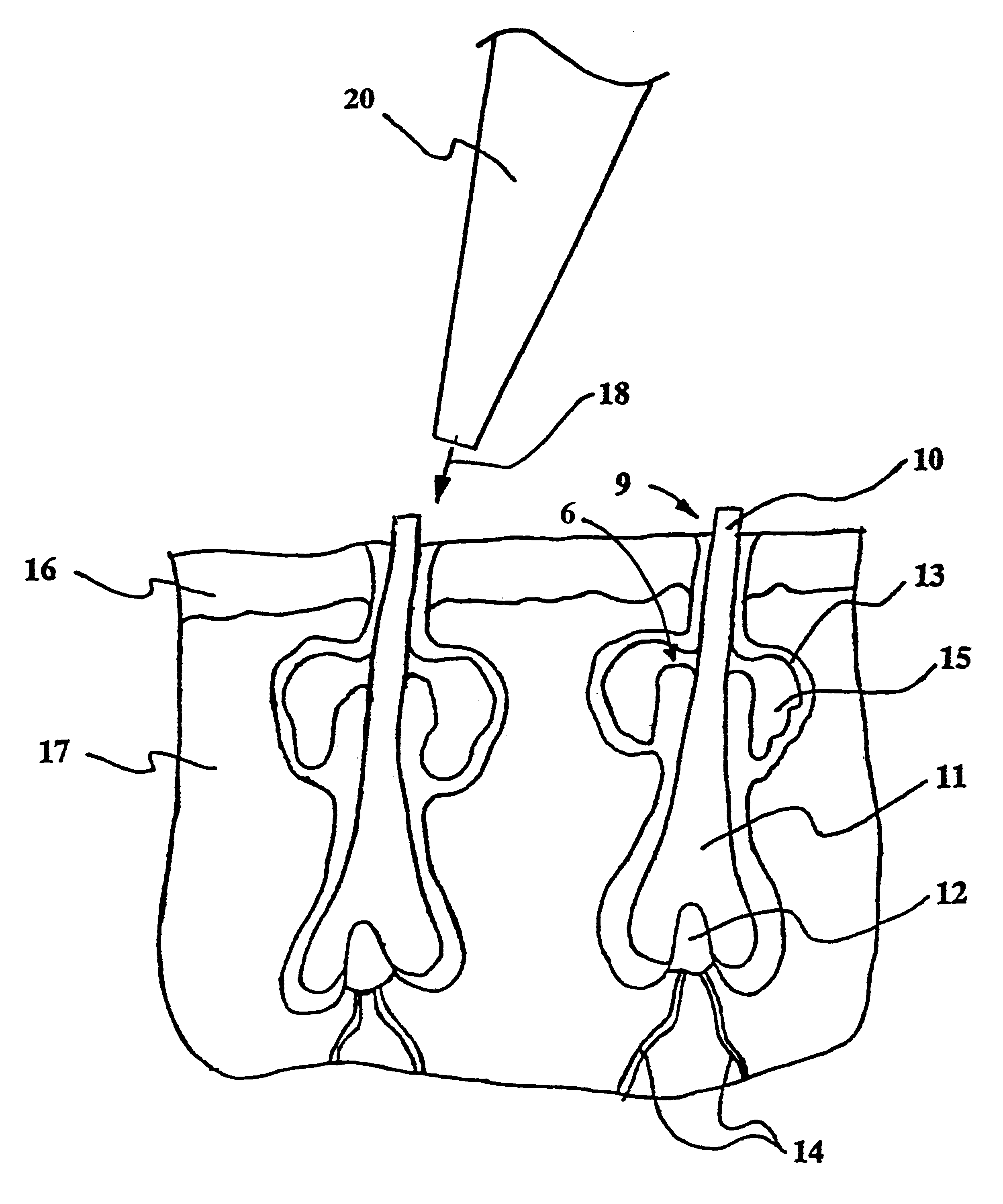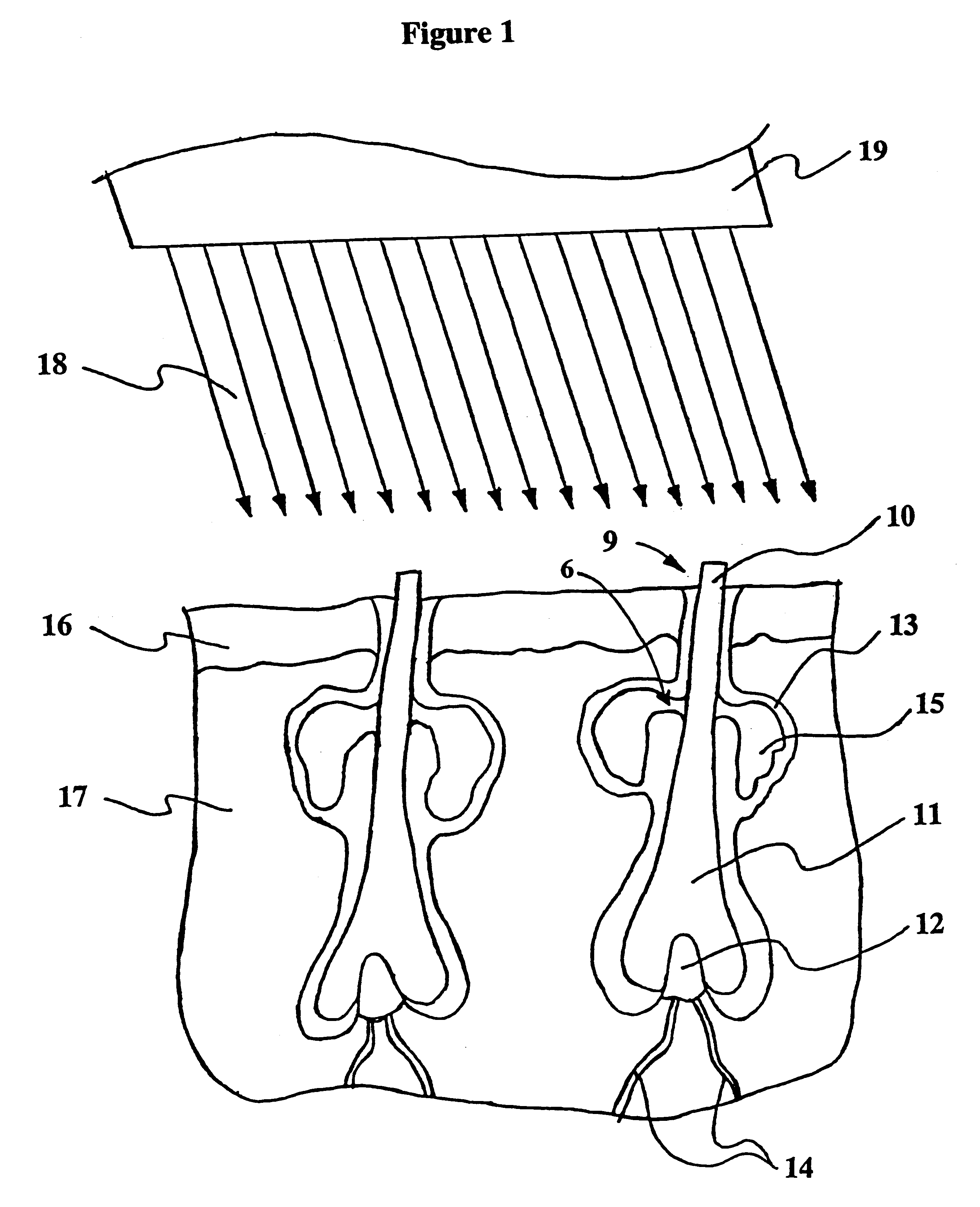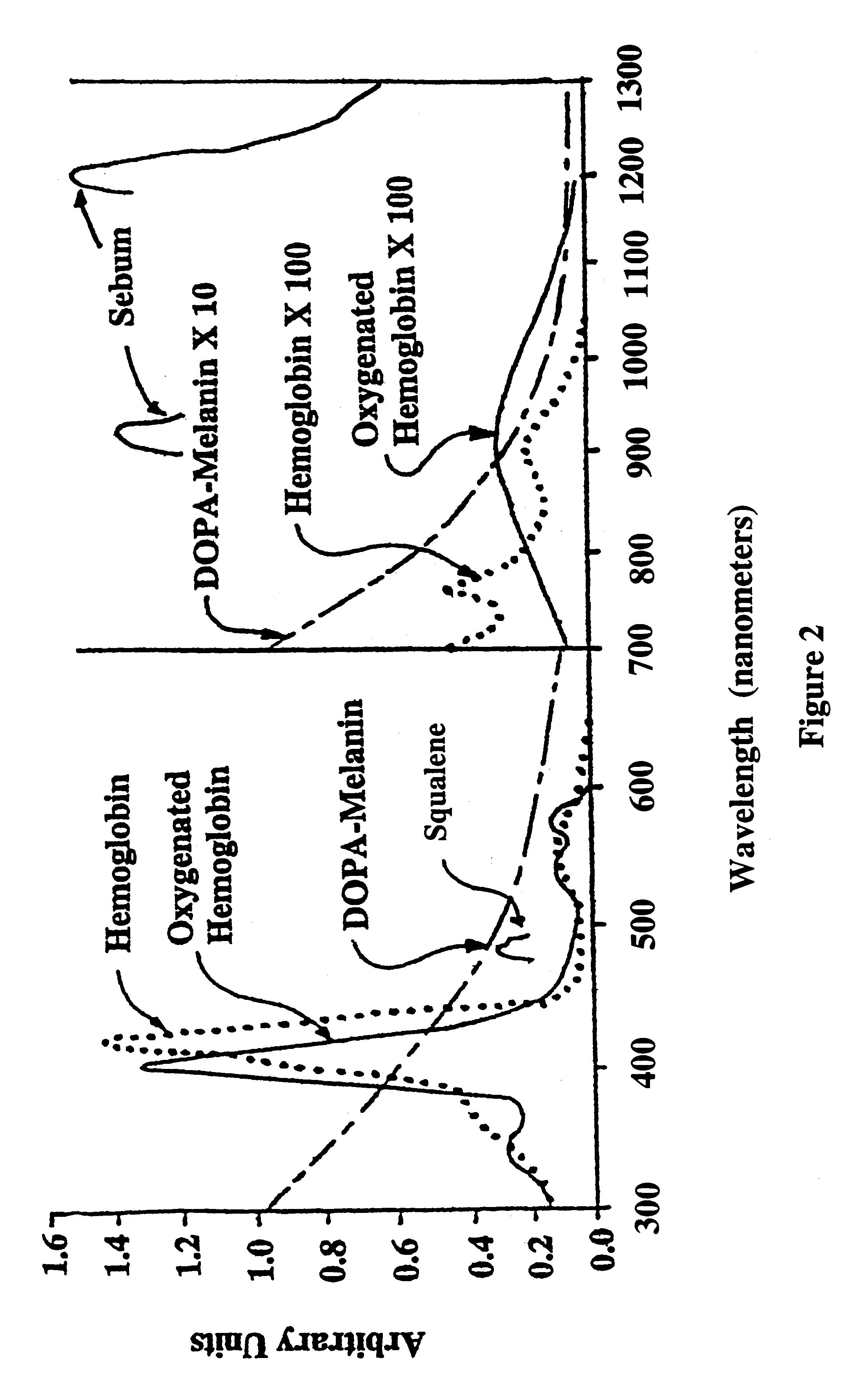Method of reducing sebum production by application of pulsed light
- Summary
- Abstract
- Description
- Claims
- Application Information
AI Technical Summary
Benefits of technology
Problems solved by technology
Method used
Image
Examples
Embodiment Construction
There are three factors involved in the development of acne. If any of the three is missing, the condition will not be present. These factors are: 1) excessive sebum production; 2) abnormal desquanation of the sebaceous follicle epithelium (comedogenesis); and 3) proliferation of P. acnes, resulting in inflammation. Seborrhea is also the result of excessive sebum production. The present invention is used to eliminate the excessive production of sebum.
In humans, the increased activity of the sebaceous glands is due in large part to the increase in dihydrotestosterone (DHT) available to the sebocytes. DHT is metabolized from testosterone (T) via the enzyme 5 alpha-reductase. The major sites for the testosterone / 5 alpha-reductase activity in humans are: 1) the prostate (Type II), in the human male; 2) the apocrine sweat glands (Type I); and 3) the sebaceous glands (Type I). The hair follicles exhibit a significantly lower activity than the sebaceous gland and contribute only marginall...
PUM
 Login to View More
Login to View More Abstract
Description
Claims
Application Information
 Login to View More
Login to View More - R&D
- Intellectual Property
- Life Sciences
- Materials
- Tech Scout
- Unparalleled Data Quality
- Higher Quality Content
- 60% Fewer Hallucinations
Browse by: Latest US Patents, China's latest patents, Technical Efficacy Thesaurus, Application Domain, Technology Topic, Popular Technical Reports.
© 2025 PatSnap. All rights reserved.Legal|Privacy policy|Modern Slavery Act Transparency Statement|Sitemap|About US| Contact US: help@patsnap.com



